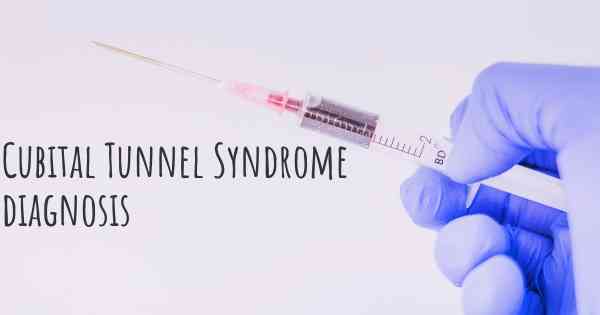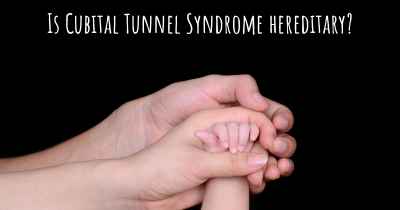How is Cubital Tunnel Syndrome diagnosed?
See how Cubital Tunnel Syndrome is diagnosed. Which specialists are essential to meet, what tests are needed and other useful information for the diagnosis of Cubital Tunnel Syndrome

How is Cubital Tunnel Syndrome diagnosed?
Cubital Tunnel Syndrome is a condition that affects the ulnar nerve as it passes through the cubital tunnel, which is a narrow passage on the inside of the elbow. This condition can cause pain, numbness, and weakness in the hand and arm. If you suspect you may have Cubital Tunnel Syndrome, it is important to seek medical attention for a proper diagnosis and treatment plan.
Medical History and Physical Examination
The diagnosis of Cubital Tunnel Syndrome typically begins with a thorough medical history and physical examination by a healthcare professional. The doctor will ask about your symptoms, when they started, and any activities or positions that worsen or alleviate the symptoms. They will also inquire about any previous injuries or medical conditions that may be contributing factors.
During the physical examination, the doctor will assess the range of motion in your elbow and wrist, as well as test the strength and sensation in your hand and fingers. They may perform specific maneuvers, such as the Tinel's sign and the elbow flexion test, to elicit symptoms and further evaluate the ulnar nerve.
Electrodiagnostic Tests
If the initial examination suggests Cubital Tunnel Syndrome, the doctor may recommend electrodiagnostic tests to confirm the diagnosis and assess the severity of nerve compression. These tests are typically performed by a neurologist or an electromyographer.
Nerve conduction study (NCS): This test measures the speed and strength of electrical signals as they travel along the ulnar nerve. Electrodes are placed on specific points along the nerve pathway, and a small electrical impulse is applied. The response is recorded, and abnormalities in the conduction of the nerve can indicate nerve compression or damage.
Electromyography (EMG): This test evaluates the electrical activity of the muscles innervated by the ulnar nerve. A fine needle electrode is inserted into specific muscles, and the electrical signals generated during muscle contraction and relaxation are recorded. EMG can help determine if there is muscle weakness or denervation due to nerve compression.
Imaging Studies
In some cases, imaging studies may be ordered to further evaluate the structures around the cubital tunnel and rule out other potential causes of symptoms. These imaging modalities can provide detailed images of the bones, soft tissues, and nerves.
X-ray: X-rays can help identify any bony abnormalities, such as bone spurs or fractures, that may be contributing to nerve compression.
Magnetic Resonance Imaging (MRI): MRI uses powerful magnets and radio waves to produce detailed images of the soft tissues, including the nerves. It can help visualize any structural abnormalities, such as cysts or tumors, that may be causing nerve compression.
Differential Diagnosis
It is important to differentiate Cubital Tunnel Syndrome from other conditions that may present with similar symptoms. The doctor will consider other potential causes, such as cervical radiculopathy (pinched nerve in the neck), thoracic outlet syndrome, or peripheral neuropathy. Additional tests or consultations with specialists may be necessary to rule out these conditions.
Summary
Diagnosing Cubital Tunnel Syndrome involves a combination of medical history, physical examination, electrodiagnostic tests, and imaging studies. It is crucial to consult with a healthcare professional for an accurate diagnosis and appropriate treatment plan. Early diagnosis and intervention can help alleviate symptoms, prevent further nerve damage, and improve overall hand and arm function.








